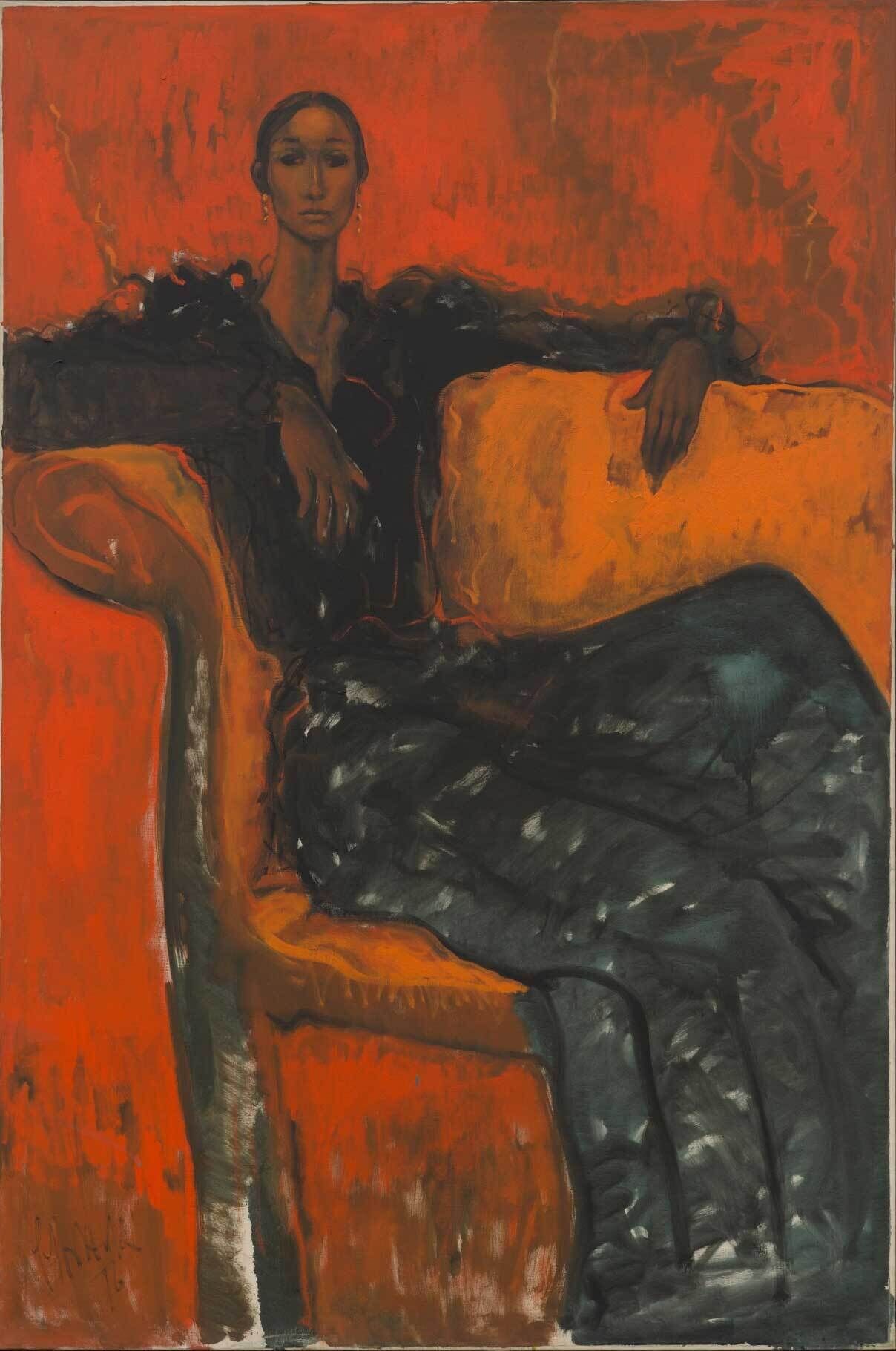Edges of Ailey | Art & Artists
Sept 25, 2024–Feb 9, 2025
Edges of Ailey | Art & Artists
Black Women
5
Throughout Alvin Ailey’s life, Black women were a constant presence and source of inspiration, whether they were fellow dancers and collaborators, such as Maya Angelou, Carmen de Lavallade, Katherine Dunham, Judith Jamison, Pearl Primus, and Sylvia Waters, or admired performers listed in his notebooks and letters, such as Marian Anderson, Billie Holiday, Leontyne Price, and Bessie Smith.
Chiefly among them was his mother, Lula Cooper, who raised him on her own and whose love and perseverance he honored through his 1971 dance Cry, a birthday gift to her. Ailey described Cry as a “tribute to the tenacity and the strength and the beauty . . . and the power of Black womanhood.” The solo—first premiered by Jamison—paid homage to the labors, hopes, and challenges of Black women. It would become an emblem and heirloom for dancers in the company, with each new performer bringing a new sensibility and dimension to the dance. With dances like Cry, Quintet (1968), Mary Lou’s Mass (1971), and The Mooche (1975), Ailey sought to render Black women—as dancers, icons, and emblems of beauty and determination—as individual and multifaceted, often by way of troubling, reclaiming, or rectifying the stereotypes and caricatures that sought, or functioned, to limit them.
Artists
- Terry Adkins
- Alvin Ailey
- Emma Amos
- Benny Andrews
- Ellsworth Ausby
- Eldren Bailey
- Richmond Barthé
- Jean-Michel Basquiat
- Romare Bearden
- Kevin Beasley
- John Biggers
- Beverly Buchanan
- Elizabeth Catlett
- Karon Davis
- Roy DeCarava
- Beauford Delaney
- Thornton Dial
- Aaron Douglas
- Sam Doyle
- David Driskell
- David Driskell
- Robert Duncanson
- Melvin Edwards
- Rotimi Fani-Kayode
- Meta Vaux Warrick Fuller
- Charles Gaines
- Ellen Gallagher
- Theaster Gates
- Sam Gilliam
- David Hammons
- Lyle Ashton Harris
- Maren Hassinger
- Palmer Hayden
- Barkley L. Hendricks
- Geoffrey Holder
- Lonnie Holley
- Clementine Hunter
- Hector Hyppolite
- Wadsworth Jarrell
- Rashid Johnson
- William H. Johnson
- Loïs Mailoi Jones
- Jacob Lawrence
- Ralph Lemon
- Norman Lewis
- Samella Lewis
- Glenn Ligon
- James Little
- Antonio Lopez and Juan Ramos
- Mary Lovelace O'Neal
- AI Loving
- Kerry James Marshall
- Archibald John Motley, Jr.
- Thomas Nast
- Senga Nengudi
- John Outterbridge
- Joe Overstreet
- Jennifer Packer
- Gordon Parks
- Fon peoples
- Horace Pippin
- Noah Purifoy
- Martin Puryear
- Faith Ringgold
- Betye Saar
- Lorna Simpson
- Alma Thomas
- Blaise Tobia
- Bill Traylor
- Makers unknown
- Rubem Valentim
- James Van Der Zee
- Carl Van Vechten
- Kara Walker
- Paul Waters
- Carrie Mae Weems
- Charles White
- Kandis Williams
- Hale Aspacio Woodruff
- Lynette Yiadom-Boakye
- Purvis Young

